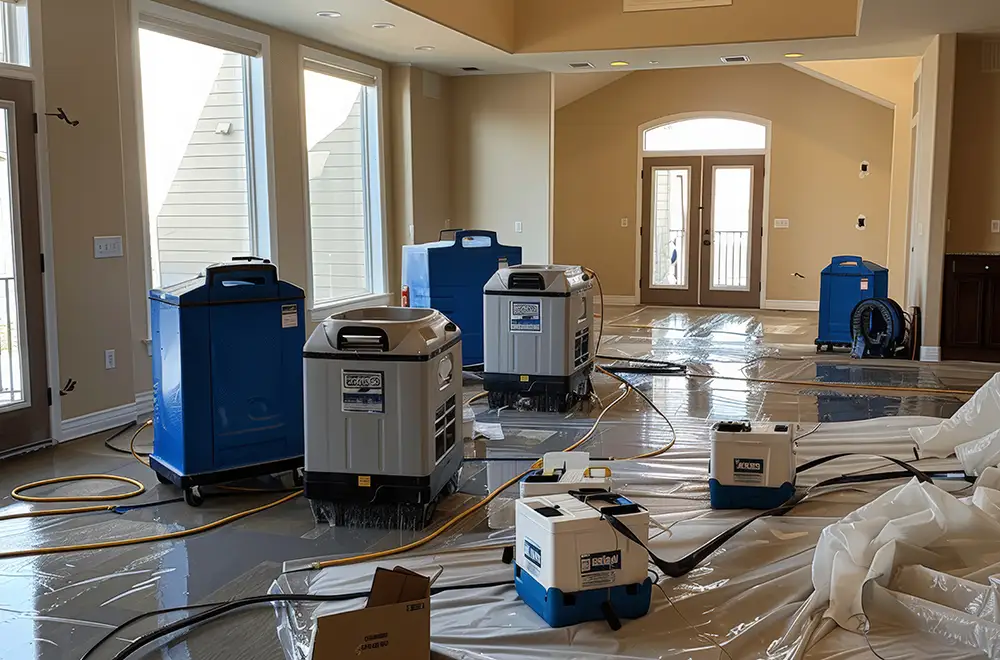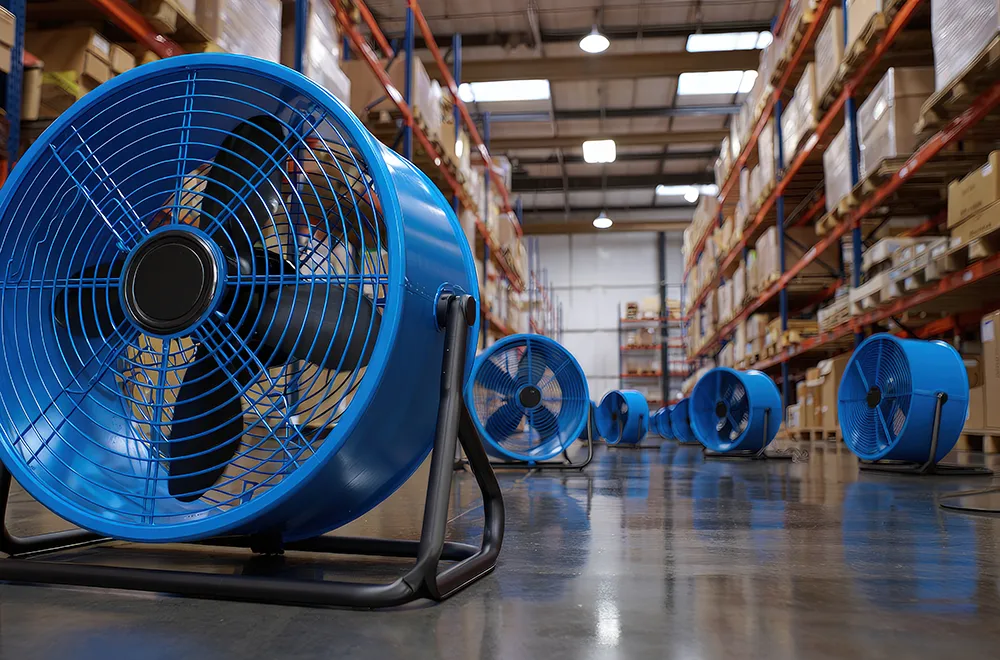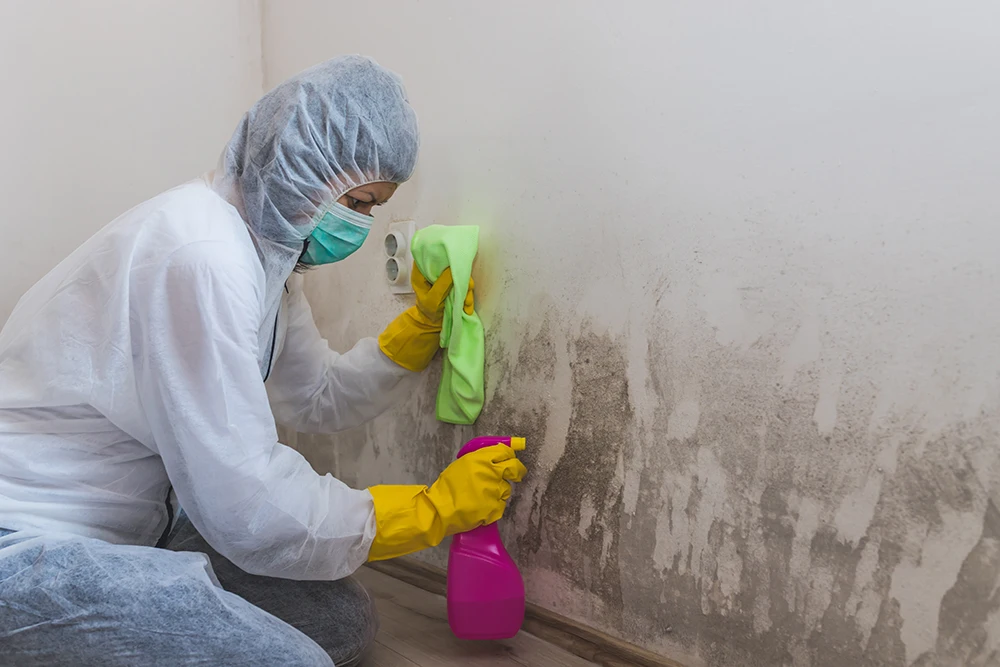Water damage restoration is the professional process of assessing, cleaning, drying, and repairing a property that has been affected by water intrusion. Whether caused by a minor leak, a burst pipe, or severe flooding, timely restoration is crucial. Understanding how long water damage restoration takes can mean the difference between minor repairs and major structural loss. Lingering moisture increases the risk of mold growth, health issues, higher repair costs, and delays in insurance claims. Homeowners often face uncertainty because every water damage situation is different, and multiple factors influence the timeline. While there’s no single answer, breaking down the typical restoration steps and how long each generally takes can give you a realistic picture of the process.
If you’re facing water damage in Tulsa or Northwest Arkansas, knowing what to expect can help reduce stress. Remember, PCC Cleaning & Restoration is available 24/7 for emergency water damage repair.
Key Steps in the Water Damage Restoration Process
Water damage restoration involves several carefully coordinated steps. Each stage addresses specific risks and recovery needs, and understanding them helps homeowners anticipate timelines and plan accordingly.
Initial Assessment & Inspection

The first step is a thorough assessment. Certified technicians inspect the affected areas to determine the source of water, the category (clean, grey, or black water), and the extent of damage. This evaluation usually takes a few hours and establishes a clear restoration plan. The results guide equipment needs, labor, and projected timelines. Accurate inspection upfront is critical because misjudging the water damage can prolong the process and increase costs.
Water Removal and Extraction

Once the assessment is complete, the restoration team moves quickly to remove standing water using high-powered pumps and industrial vacuums. Depending on the volume of water, this process can take a few hours to a full day. Rapid extraction is essential to prevent secondary damage, such as swelling wood, warped floors, or water seeping into unseen areas.
Drying and Dehumidification

After water removal, affected areas must be thoroughly dried. Technicians use air movers, dehumidifiers, and moisture meters to ensure structural elements, such as walls, subfloors, and insulation, are completely dry. For most homes, this step takes 2–5 days, but it can take longer if water has penetrated deeply or if Tulsa or NWA humidity slows the process. Drying is often the longest phase of restoration services because incomplete drying can lead to mold growth. PCC Cleaning & Restoration uses advanced drying technology to ensure a thorough and efficient process.
Cleaning, Sanitization, and Mold Prevention

With surfaces dry, the next step is cleaning and disinfecting. Contaminants are removed, surfaces sanitized, and antimicrobial treatments applied to prevent mold growth within 24–48 hours. Depending on the size of the area, this stage can take 1–2 days. Proper cleaning not only restores your home but also protects your family’s health. PCC Cleaning & Restoration offers comprehensive mold prevention and cleaning services to ensure a safe environment.
Repairs, Reconstruction, and Final Restoration
After water removal and cleaning, damaged materials may need repair or replacement. This can include drywall, flooring, insulation, or other structural components. Cosmetic fixes like painting and finishing touches are also part of this step. Depending on the severity of the damage, repairs and reconstruction can take anywhere from several days to several weeks.
Final Walkthrough and Approval
The last step is a final inspection with the homeowner. This walkthrough ensures that all repairs are complete, no hidden moisture remains, and every concern has been addressed. Typically completed within a few hours, this stage confirms that your home is fully restored.
PCC’s emergency water damage repair team is available 24/7 to support Tulsa and NWA residents throughout the process.
Typical Restoration Timelines by Severity
The water damage restoration timeline depends heavily on the extent of damage. Here’s what homeowners can generally expect from a restoration company:
Minor Water Damage (small leaks, single room)
Minor water damage, such as a leaking dishwasher or faucet, typically requires 1–3 days for drying and minor repairs. These incidents are relatively easy to manage, with limited impact on structural elements. For example, a small kitchen leak might only need water extraction, drying, and a few cosmetic fixes.
Moderate Damage (multiple rooms, drywall, carpets)
When damage affects multiple rooms or key materials like drywall and carpeting, restoration can take 1–2 weeks. A pipe burst affecting several areas of a home is a common scenario. Multiple rooms require careful extraction, thorough drying, and possible material replacement.
Severe Damage (flooding, structural issues)
Severe damage, including flooding and structural compromise, may last several weeks to months. Basements or entire floors may be submerged, requiring extensive drying, mold prevention, and reconstruction.
Catastrophic Damage (whole-home reconstruction)
In cases of natural disasters or widespread flooding, a complete rebuild can take several months. This includes structural repairs, rebuilding walls and floors, and restoring the home to its pre-damage condition.
Regardless of the severity, PCC Cleaning & Restoration is available 24/7 to ensure fast, professional service and peace of mind.
Factors That Influence How Long Restoration Takes
Several factors can affect water damage restoration timelines:
- Type of water: Clean water is quicker to handle than sewage-contaminated water (grey/ black).
- Size of the affected area: Larger areas naturally take longer to restore.
- Materials impacted: Porous materials, such as carpet or drywall, absorb water and require longer drying times.
- Weather & humidity: In Tulsa and NWA, high humidity can significantly slow the drying process.
- Hidden water: Moisture trapped behind walls or subfloors may go unnoticed and extend restoration time.
- Insurance claims & permits: Approvals for claims or permits can delay reconstruction.
- Contractor availability & material supply: Limited access to skilled labor or necessary materials can increase timelines.
Despite these variables, PCC Cleaning & Restoration is available 24/7 to begin mitigation immediately, helping reduce overall restoration time and prevent further damage.
How to Speed Up the Water Damage Restoration Process
While professional intervention is essential, homeowners can take steps to accelerate recovery:
- Shut off water and electricity immediately, if safe.
- Call certified professionals without delay.
- Move personal belongings out of affected areas.
- Use fans and ventilation while waiting for the restoration crew.
- Work promptly with insurance adjusters.
- Remove damaged materials early if advised by experts.
PCC Cleaning & Restoration is available 24/7 to help homeowners act quickly and reduce overall restoration timelines.
Risks of Delaying Water Damage Restoration
Delaying water damage restoration can have serious consequences. Mold can begin growing within 24–48 hours, creating health risks, while structural elements such as wood, drywall, and foundations can weaken over time. As damage spreads, repair costs increase, insurance claims may be denied if the response is delayed, and homeowners risk permanent loss of personal belongings.
Acting quickly protects both your property and your health. PCC Cleaning & Restoration responds immediately to minimize these risks.
Final Thoughts
How long water damage restoration takes depends on several factors, including the severity of the damage, the type of water, the affected materials, and environmental conditions. Minor leaks may be resolved in a few days, while severe flooding could require several months. The most important factor is acting quickly, as prompt action helps prevent mold, structural damage, and costly delays.
For homeowners in Tulsa, NWA, and surrounding areas, PCC Cleaning & Restoration is available 24/7 to respond to emergencies, provide expert assessment, and restore your home safely and efficiently.
FAQs
How long does it take to extract water after a flood?
Extraction typically takes a few hours to a full day, depending on the amount of water and affected areas. Quick extraction prevents further damage and reduces overall restoration time.
How soon does mold begin after water damage?
Mold can start forming within 24–48 hours if surfaces remain damp, making immediate drying and sanitization critical.
What’s the average drying time for a house with water damage?
Most homes require 2–5 days for thorough drying, although severe or hidden water damage can extend this timeline.
How do different water categories (clean, grey, black) affect timelines?
Clean water generally allows faster restoration, while grey or black water requires extra safety measures, increasing time for sanitization and repairs.
Does insurance slow down or speed up restoration?
Insurance can both help and delay restoration. Quick claims approval accelerates repairs, but delays in documentation or inspections can extend project timelines. PCC Cleaning & Restoration works closely with insurance providers to help streamline the process and minimize delays.
Can homeowners speed up drying before professionals arrive?
Yes. Homeowners can use fans, improve ventilation, and remove items from affected areas, but professional drying is essential for complete and safe restoration.
